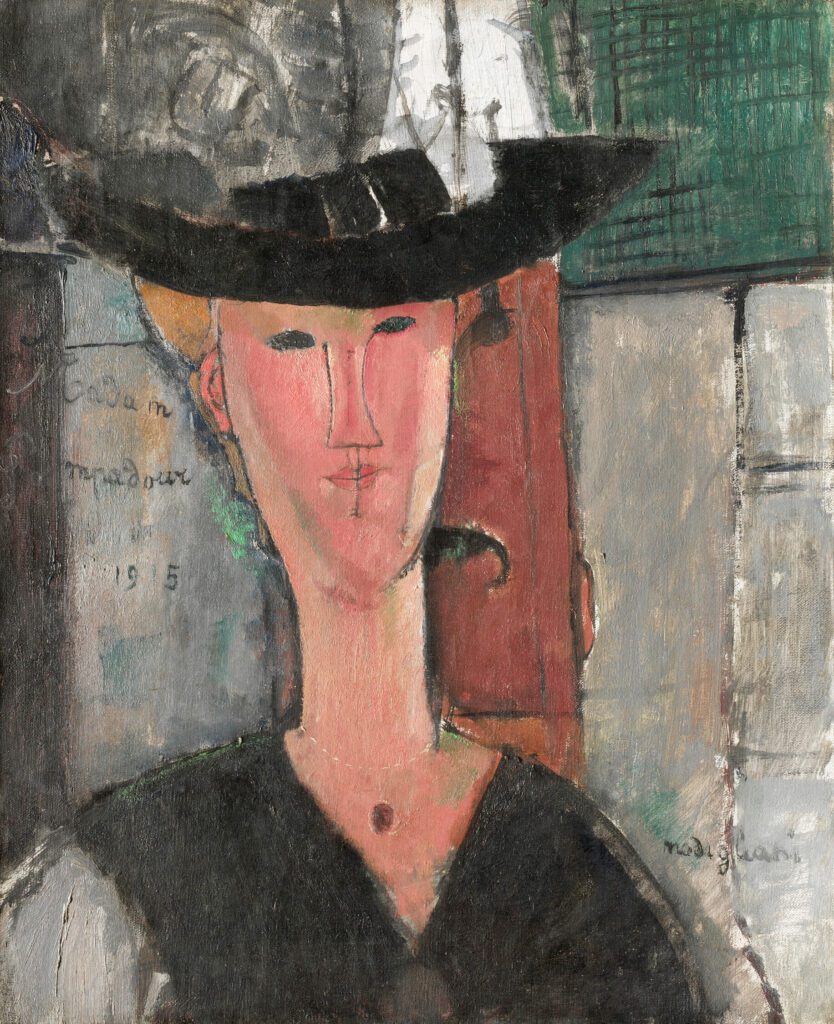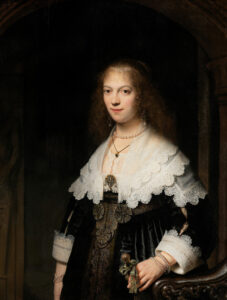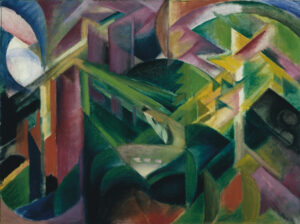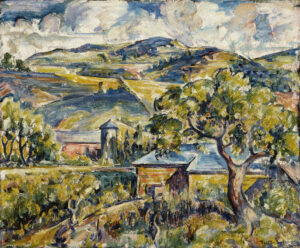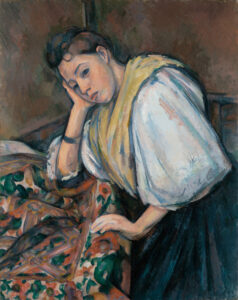In “Madam Pompadour” (1915), Modigliani reveals a portrait of austere elegance and striking modernity.
The elongated face, characteristic of his style, is rendered in a warm palette where salmon pink contrasts with the deep black of the hat and garment. This chromatic interplay, supported by a grayish background structured with vertical and horizontal lines, gives the work a mysterious tension. The geometric treatment and stylization of the face—almond-shaped eyes, tapered nose, and mouth reduced to a simple line—demonstrate a bold synthesis between Cubist influences and African primitive art. The apparent simplicity conceals a carefully orchestrated composition where the verticality of the slender neck responds to the robustness of the hat, creating a formal tension that captivates the viewer. The model may be Beatrice Hastings, Modigliani’s mistress at this time.
Further details:
- Madam Pompadour, by Amedeo Modigliani, 1915
- 61.1 × 50.2 cm
- The Art Institute of Chicago, Modern Art, gallery 391
- https://www.artic.edu/artworks/27281/madam-pompadour
Amedeo Modigliani (1884-1920) embodies the tormented genius of early 20th century Parisian bohemia. Of Italian origin, he settled in Paris in 1906 where he mingled with the artistic avant-garde while cultivating a deeply personal style. Consumed by alcohol and drugs, he led an incandescent existence that ended prematurely at age 35. This work, created during World War I, belongs to his period of artistic maturity.
After abandoning sculpture for health reasons, Modigliani then concentrated his expression on painting, developing a unique and instantly recognizable manner. His portraits, marked by oval faces with exaggerated necks and often empty eyes, convey a vision both melancholic and timeless of his subjects, transcending individuality to achieve a form of poetic universality.

